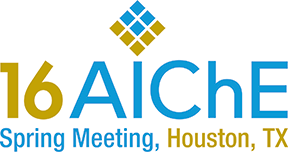

When planning in-service repairs or enhancements that involve the joining of metals; sparks, flames and even elevated temperatures are a concern for refinery and storage terminal owners and operators. Processes that generate uncontrolled elevated temperatures that exceed Auto Ignition Temperatures (AITs) published by American Petroleum Institute (API) or published Hot Surface Ignition Temperatures (HSITs) are often scrutinized and classified as “hot work” within these facilities. A metal bonding process has been developed that in inherently safe in these environments where flammable hydrocarbons are present.
Friction welding is a solid-state welding process that generates heat through mechanical friction between work pieces in relative motion to one another, with the addition of a lateral force to plastically displace and fuse the materials. Technically, because no melt occurs, friction welding is not actually a welding process in the traditional sense, but a forging technique. An advanced form of friction welding called forge bonding has been developed for portable entry into refineries, improving worksite safety by reducing the time at temperature and the hot surface area at the bonding site. In addition, forge bonding has a distinct advantage over welding in that it can join dissimilar metals that have largely different melting points.
An introduction to the forge bonding process followed by results from extensive ignition testing to determine the safety margin of multiple chemicals commonly found in refineries when in the presence of forge bonding, will be presented. The dependency of the ignition temperature of hydrocarbons on the hot surface area and the ignition lag time are discussed along with support from data from API 2216 and other well known publications. A presentation of the problem followed by an investigation of the forge bonding solution will prove that ignition of common hydrocarbons is not possible in the presence of the low energy levels created by the small hot surface area, short ignition lag time and moderate temperatures.
Real life implementations add further proof that forge bonding is an alternative to welding that is inherently safe in refineries, storage terminals and anywhere flammable hydrocarbons are present. This technology has far reaching implications for improved safety in other industries, such as pharmaceutical, pipelines, mining and marine to name just a few.
Preview Presentation
Presenter(s)
Language
Pricing
Individuals
| AIChE Member Credits | 0.5 |
| AIChE Pro Members | $19.00 |
| Fuels and Petrochemicals Division Members | Free |
| AIChE Graduate Student Members | Free |
| AIChE Undergraduate Student Members | Free |
| AIChE Explorer Members | $29.00 |
| Non-Members | $29.00 |
